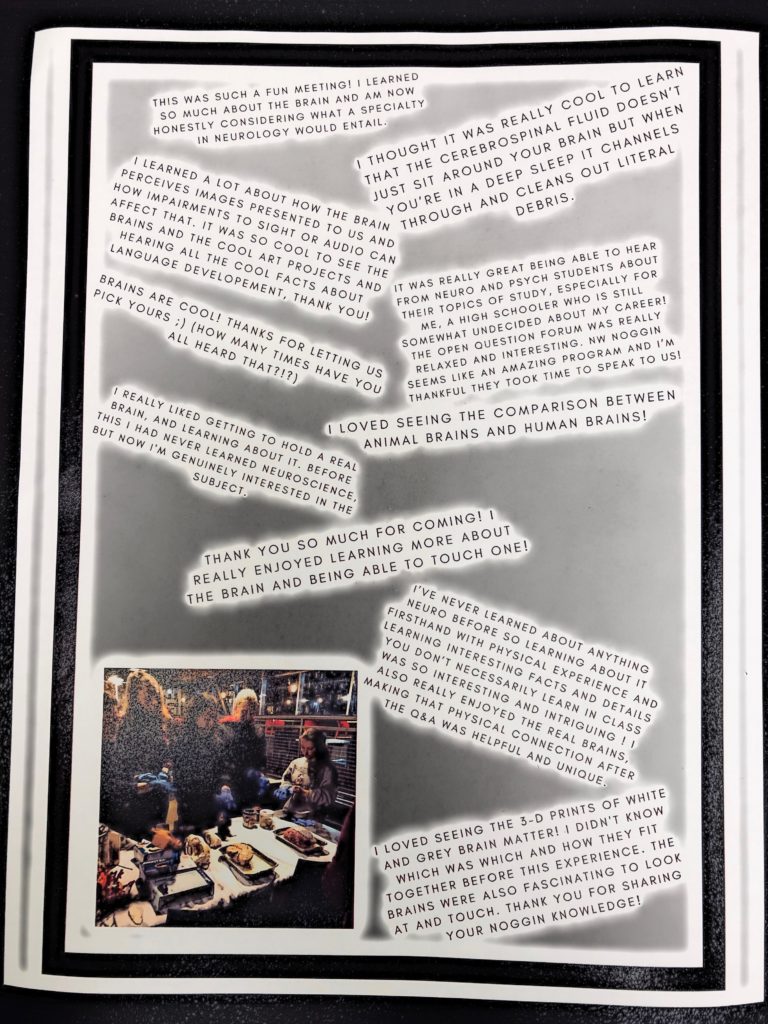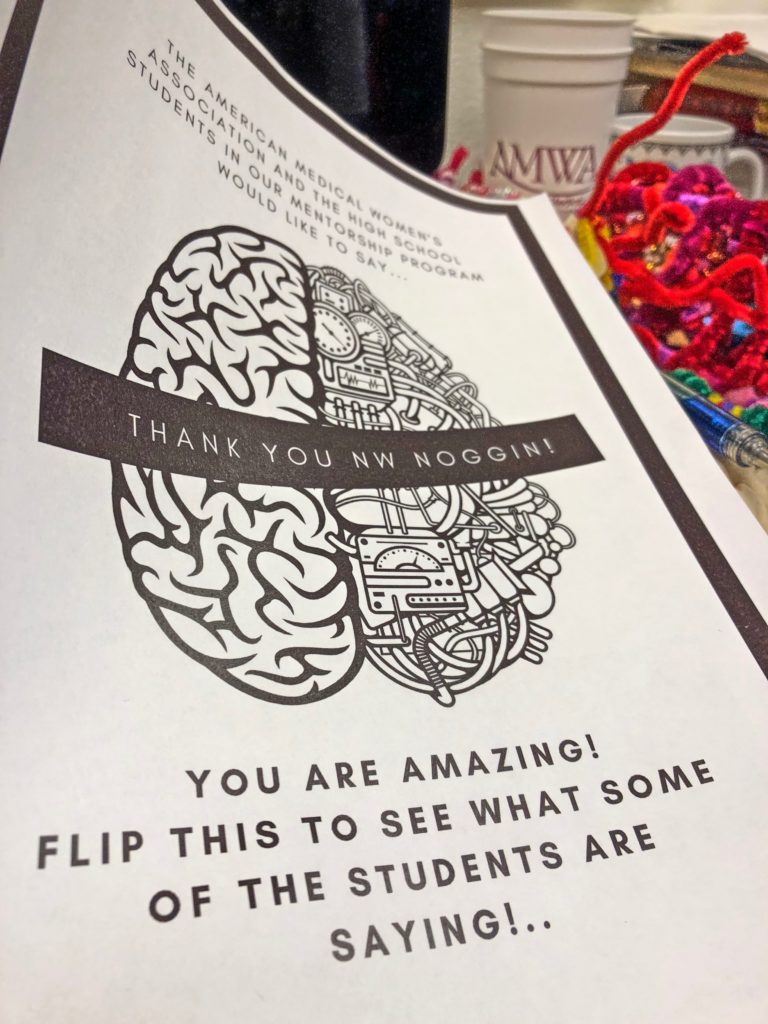The American Medical Women’s Association is a century old organization serving “to advance women in medicine and improve women’s health…by providing and developing leadership, advocacy, education, expertise, mentoring, and strategic alliances…”

LEARN MORE: American Medical Women’s Association
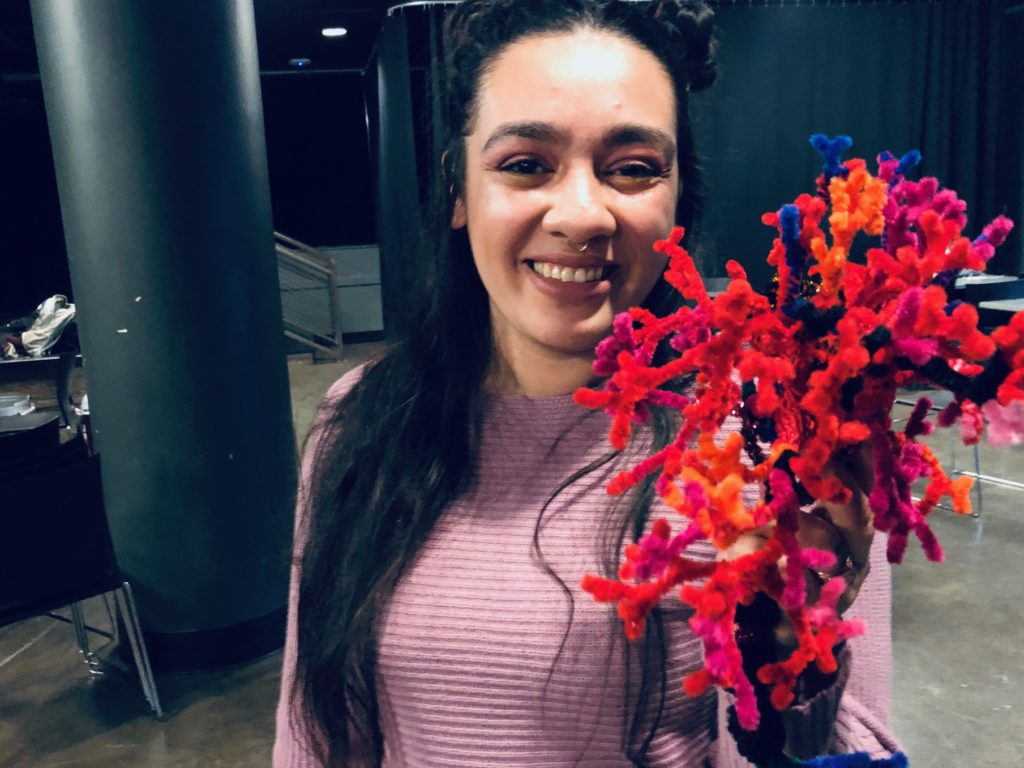
“A woman’s health is her capital.” –Harriet Beecher Stowe
We LOVE collaborating with Lelani Lealiiee-Sjoden, the AMWA Chapter President and an NIH BUILD EXITO scholar at Portland State University to bring together brains, art and volunteers to discuss their own educational, outreach and research career journeys with high school students from Portland Public Schools…

NW Noggin @ Franklin High School AMWA meeting, February 2018
LEARN MORE: NW Noggin @ American Medical Women’s Association mtg 2018
LEARN MORE: APPLY TO BE A BUILD EXITO SCHOLAR FOR 2019
Three accomplished BUILD EXITO scholars, McKenzie Figuracion, Sawyer Perry and Isabella Maranghi, arrived at PSU’s Smith Memorial Union on a wet and rainy Northwest night to meet with about 20 students from Benson, Wilson and Franklin high schools…
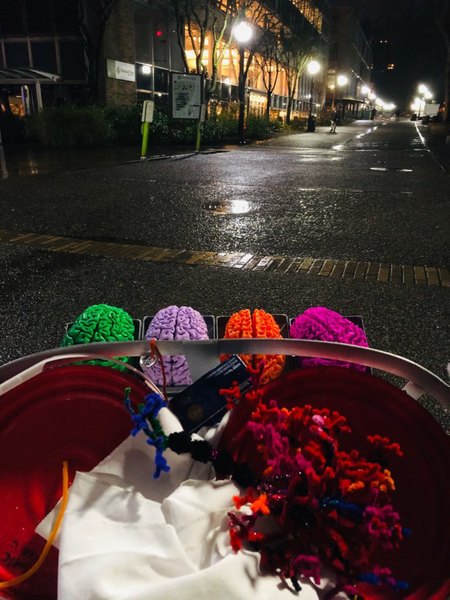
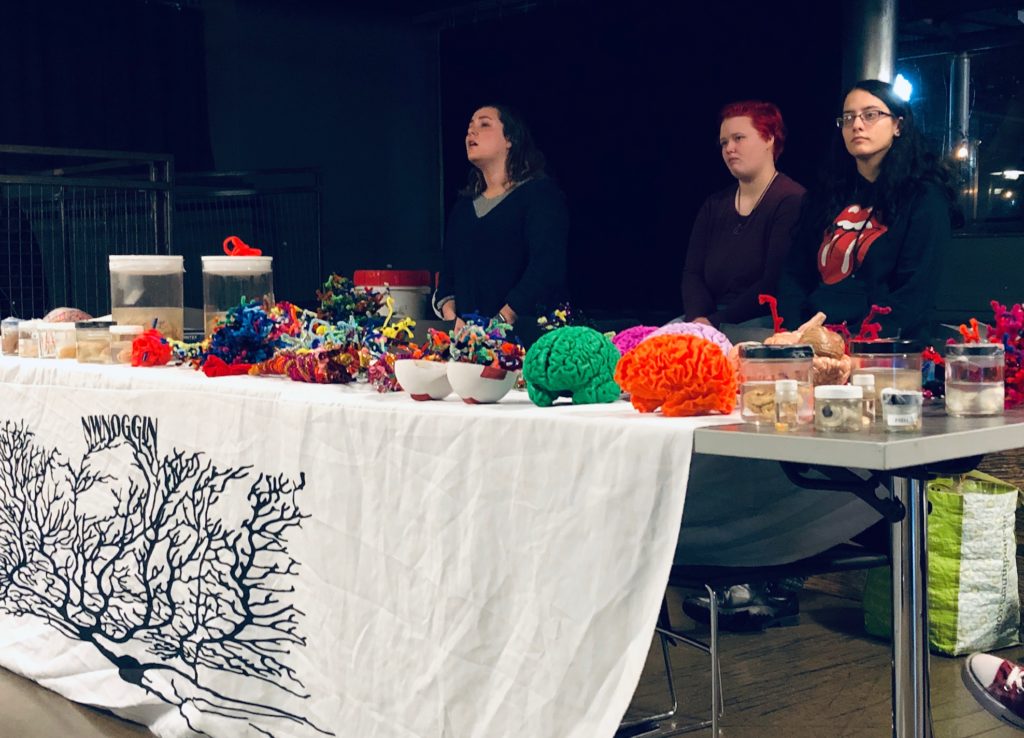
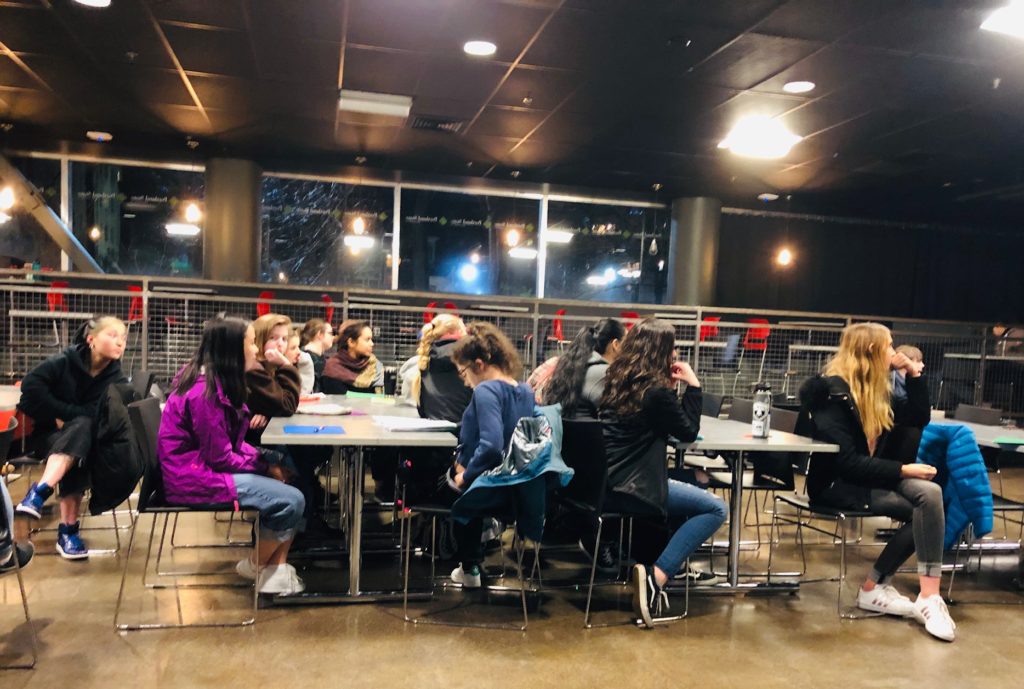
There were many questions!
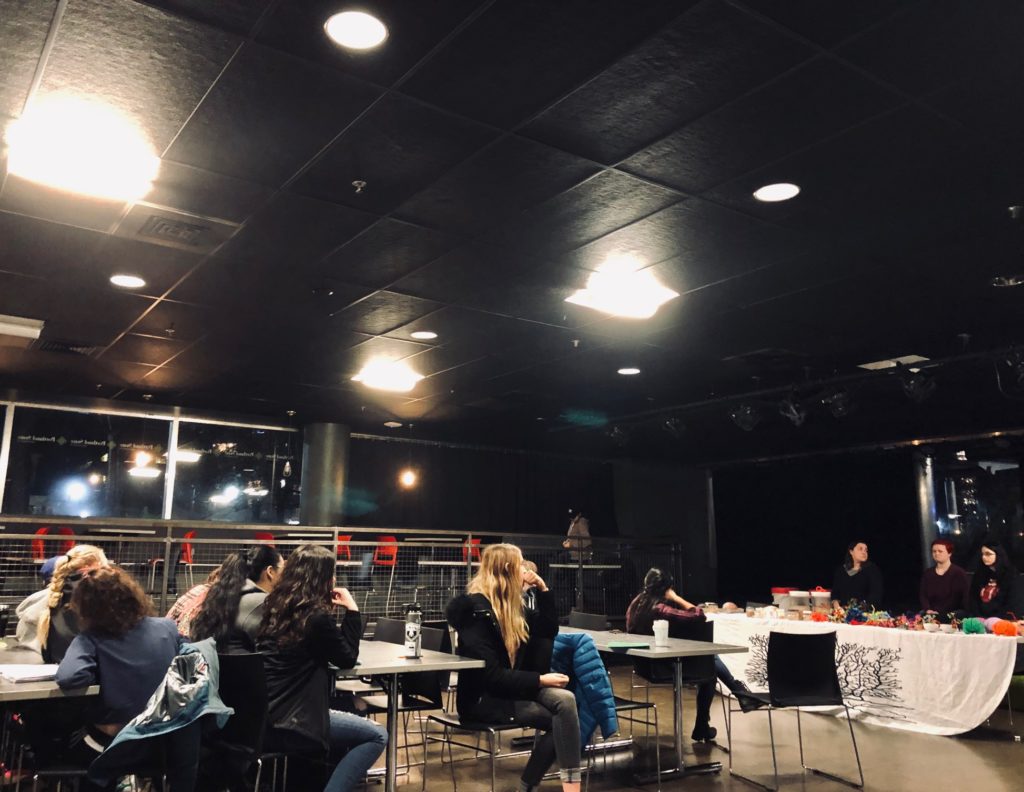
“How does adolescence change your brain? Why do migraines produce perceptual auras? Will learning different languages influence how you think? Does sign language differ from spoken language in the brain? What is synesthesia? Why do drugs like LSD and psilocybin produce hallucinations? Are there any therapeutic uses for these drugs?”
Isabella, who works in a speech and hearing lab at PSU, spoke about language, and explained that both sign and spoken languages share similar linguistic structure, and (typically) engage the same left hemisphere network of regions in the brain!

Damage to left frontal lobe networks may lead to difficulties in the production of language in any form (speech, sign, writing), while damage to more posterior temporal (and parietal) regions more typically impacts language comprehension…

“Damage to left frontal regions was associated with production difficulties in American Sign Language (Broca’s-like aphasia), whereas damage in the left temporal lobe was more likely to cause problems in comprehension of ASL (Wernicke’s-like aphasia).” – Ruth Campbell et al
LEARN MORE: Sign Language and the Brain: A Review
There are, however, some fascinating differences. For example, perhaps since native signers use space to visually place the objects they’re discussing, and to express the relationships between them, there appears to be more right hemisphere activity in those using sign languages (including American Sign Language, or ASL) than in those using only spoken languages.
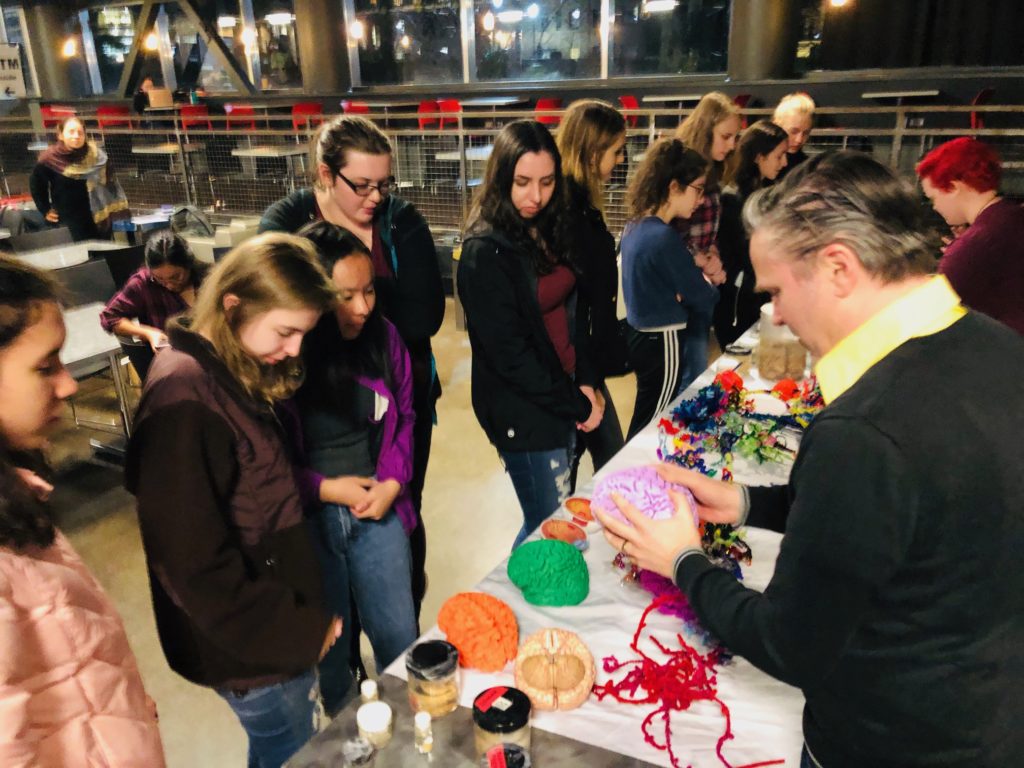
LEARN MORE: Neural systems underlying spatial language in American Sign Language
In addition, gestures that accompany speech will selectively activate movement-specific regions in the brains of those hearing language, while in signers, these gestures also engage the language networks in the left hemisphere (though more weakly than actual ASL)…
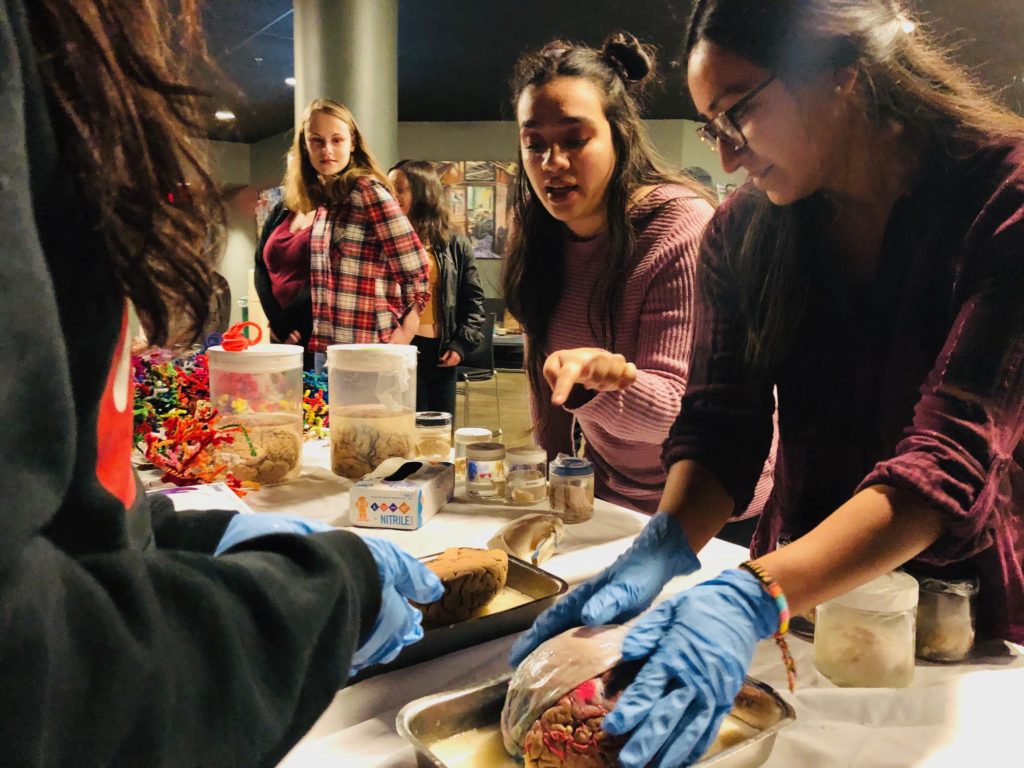
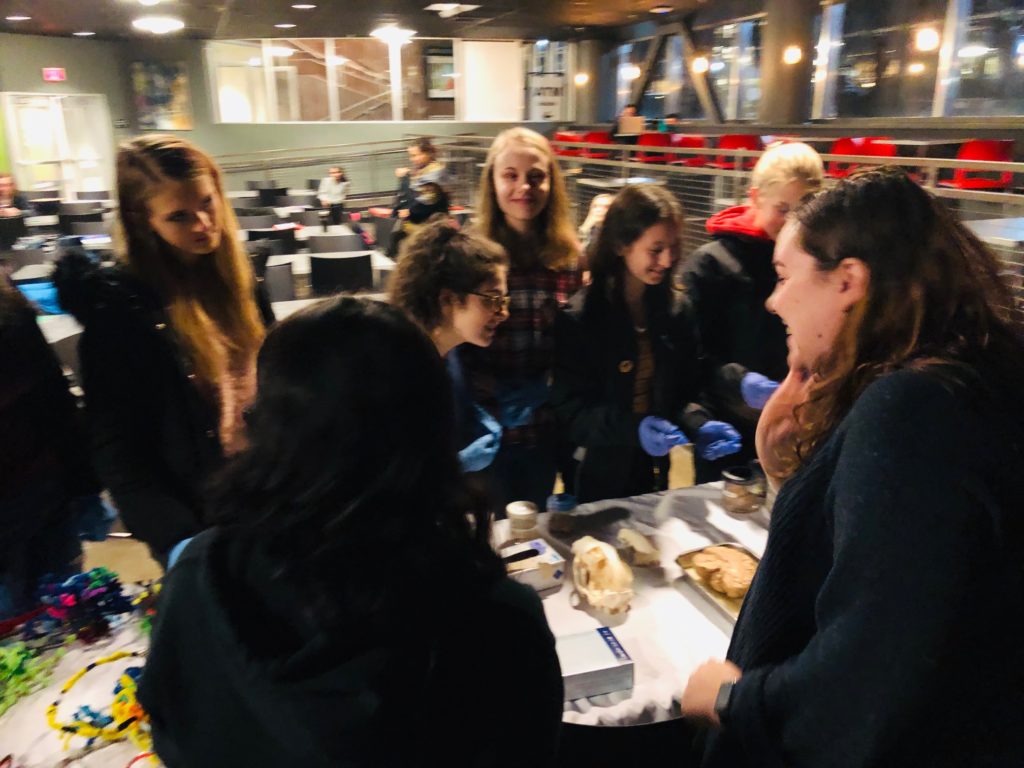
Regarding migraine auras, McKenzie, a teaching assistant for the Perception class at PSU, emphasized the distinction between sensory detection (by specialized sensory neurons, or afferents, like the photoreceptors in your eye that selectively absorb electromagnetic energy) and the networks in your brain that are organized by developmental experience to allow for perceptual experiences…

Styrofoam brain by Ashley Keates & Max Barsana
LEARN MORE: Building a Brain for Science
Visual details detected by photoreceptors in the eyes are transmitted through neural networks to the occipital lobe (at the back of your brain), then further processed in temporal lobe networks to perceive what you are looking at, and in parietal lobe networks to determine where the perceived objects are…
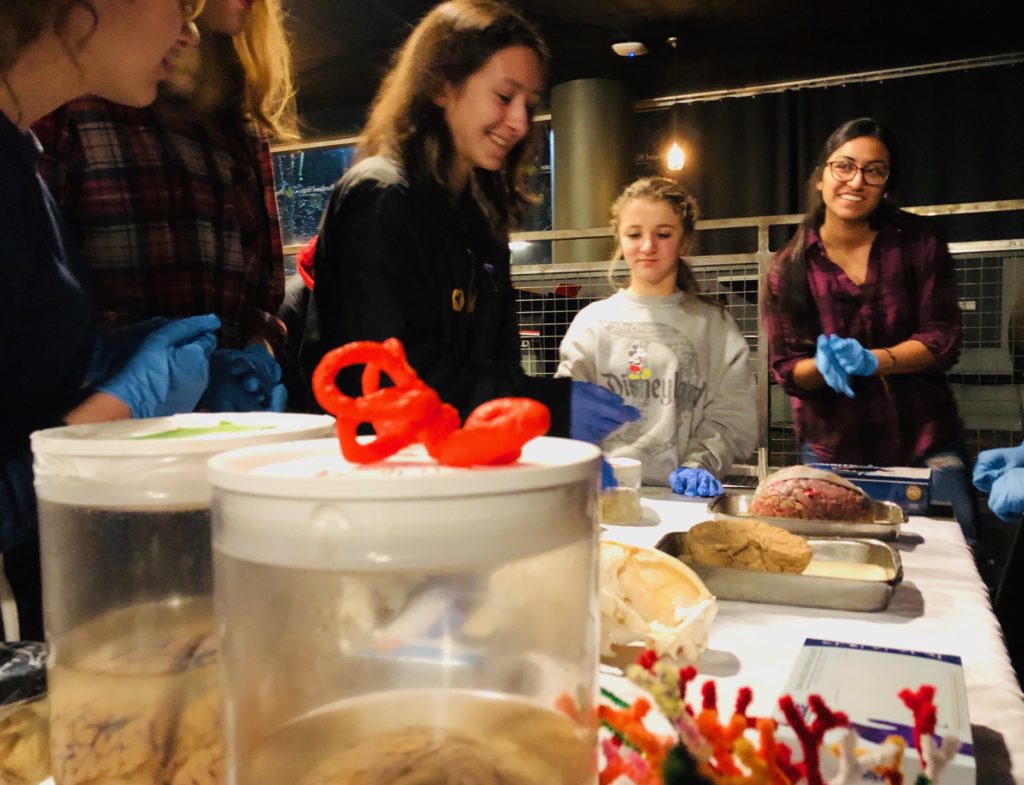
LEARN MORE: Tagging the temporal lobe
Migraine is a complex disorder involving disruption of normal blood flow to the head and brain, often triggering activity changes in the trigeminal ganglia – the location of cell bodies for nerves carrying information about injury from your face and head to your brain.
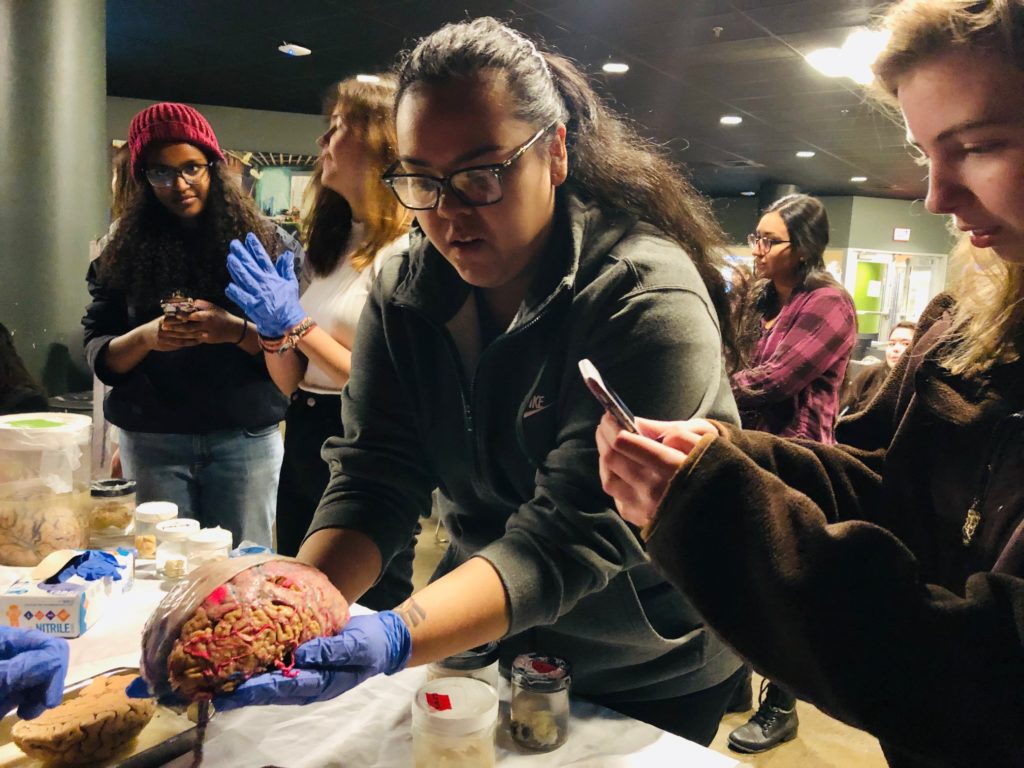
It can be extremely unpleasant, persist for hours or even days, and may be preceded by an “aura”; often an unusual visual disturbance that seems like a jagged, shimmering semi-circle of pulsating light…
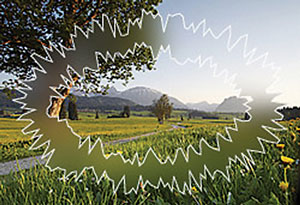
“What causes the aura associated with migraine headaches?”
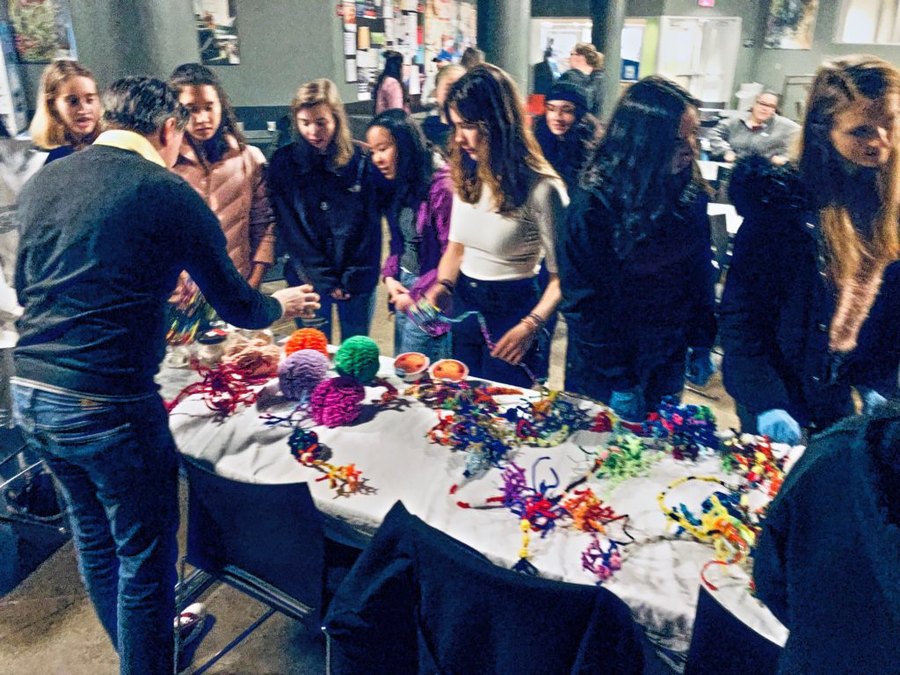
Blood flow, transmitter and perhaps other changes associated with a migraine may disrupt neural activity in the early visual regions of the brain (in the occipital lobe), generating odd and compelling visual perceptual experiences like the scintillating scotoma illustrated in the image…
LEARN MORE: NIH Migraine Information Page
LEARN MORE: Serotonin and CGRP in Migraine
LEARN MORE: Visual Aura and Scotomas: What Do They Indicate?
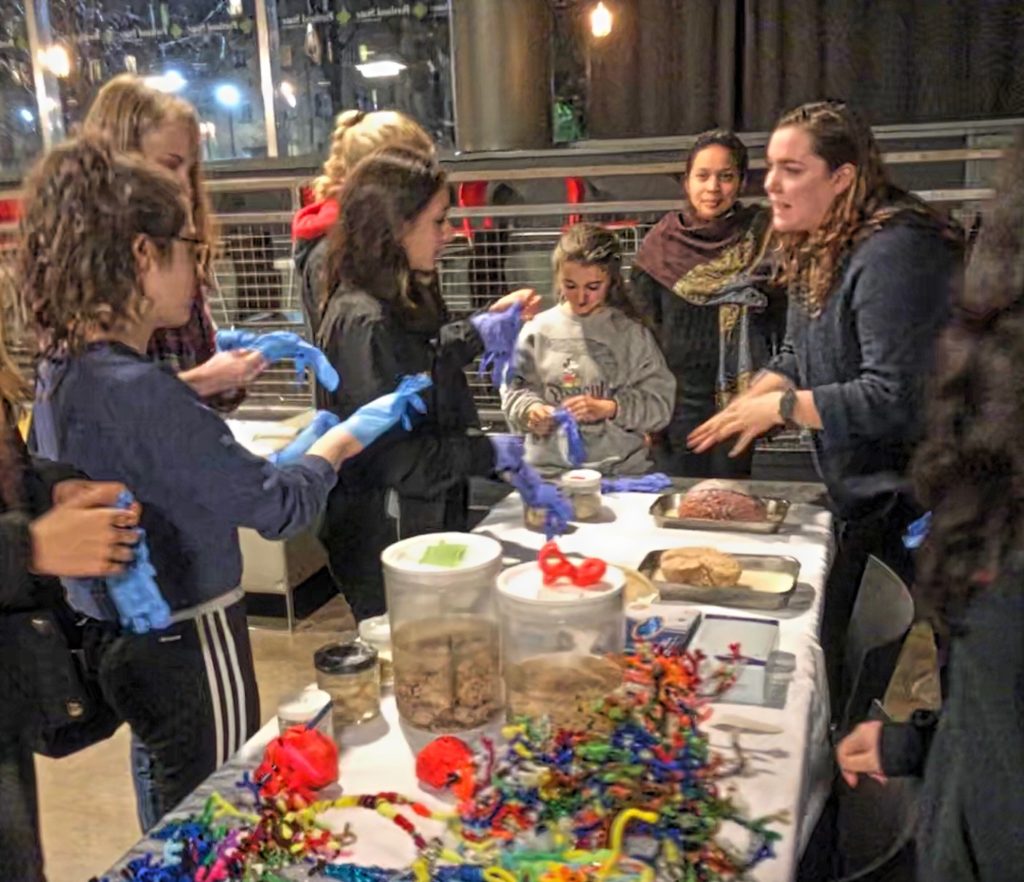
We answered plenty of terrific questions from these informed, inquisitive high school students about the relationship between brain and behavior, and Sawyer, Isabella and McKenzie also detailed what it’s like to study neuroscience and how they managed to find educational, internship and outreach opportunities in university classrooms and research labs…
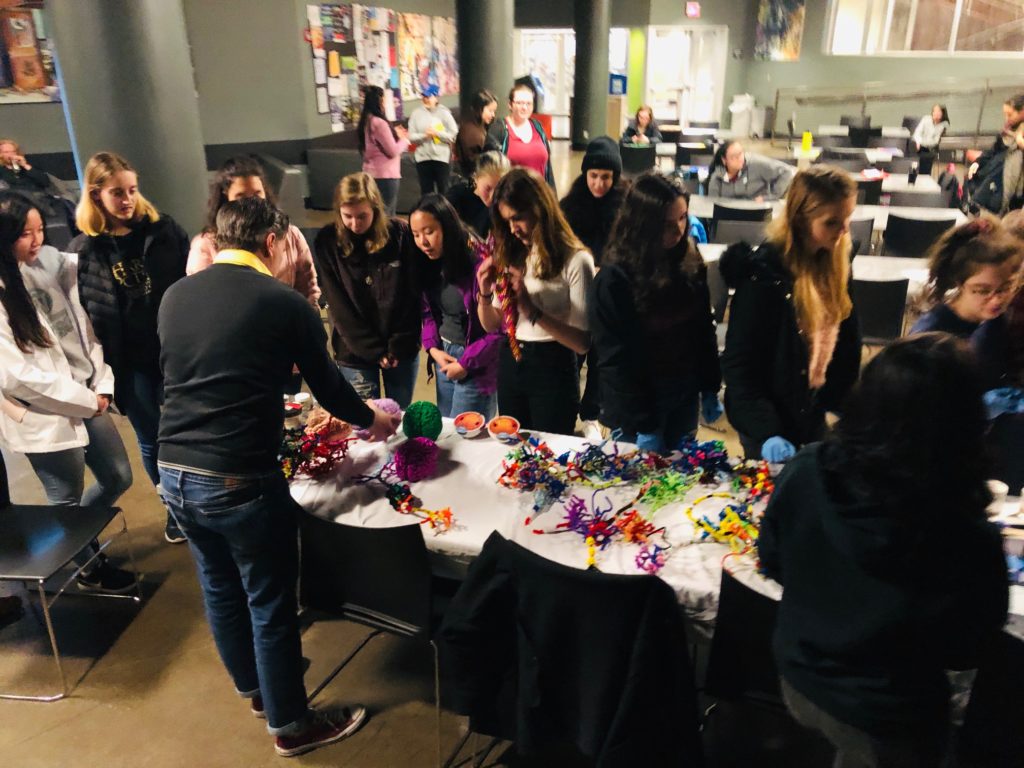
Our thanks to the students from Portland Public Schools, and to everyone at the American Medical Women’s Association chapter at PSU!
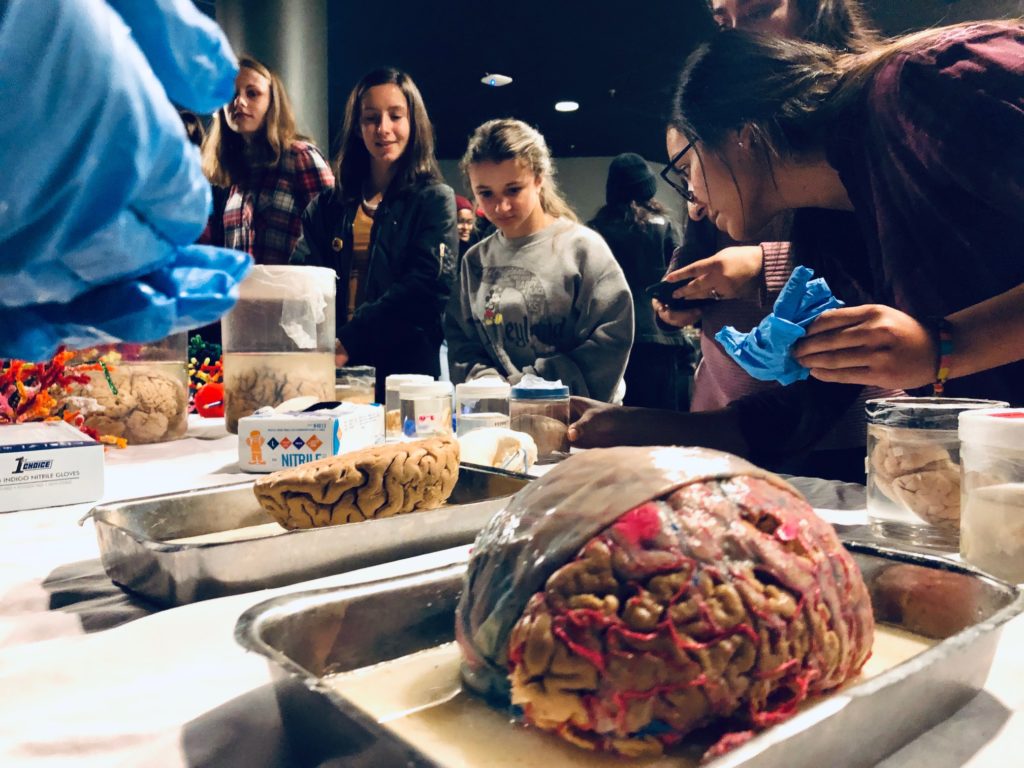
Thank you for the jam, injection pens and student comments too!
